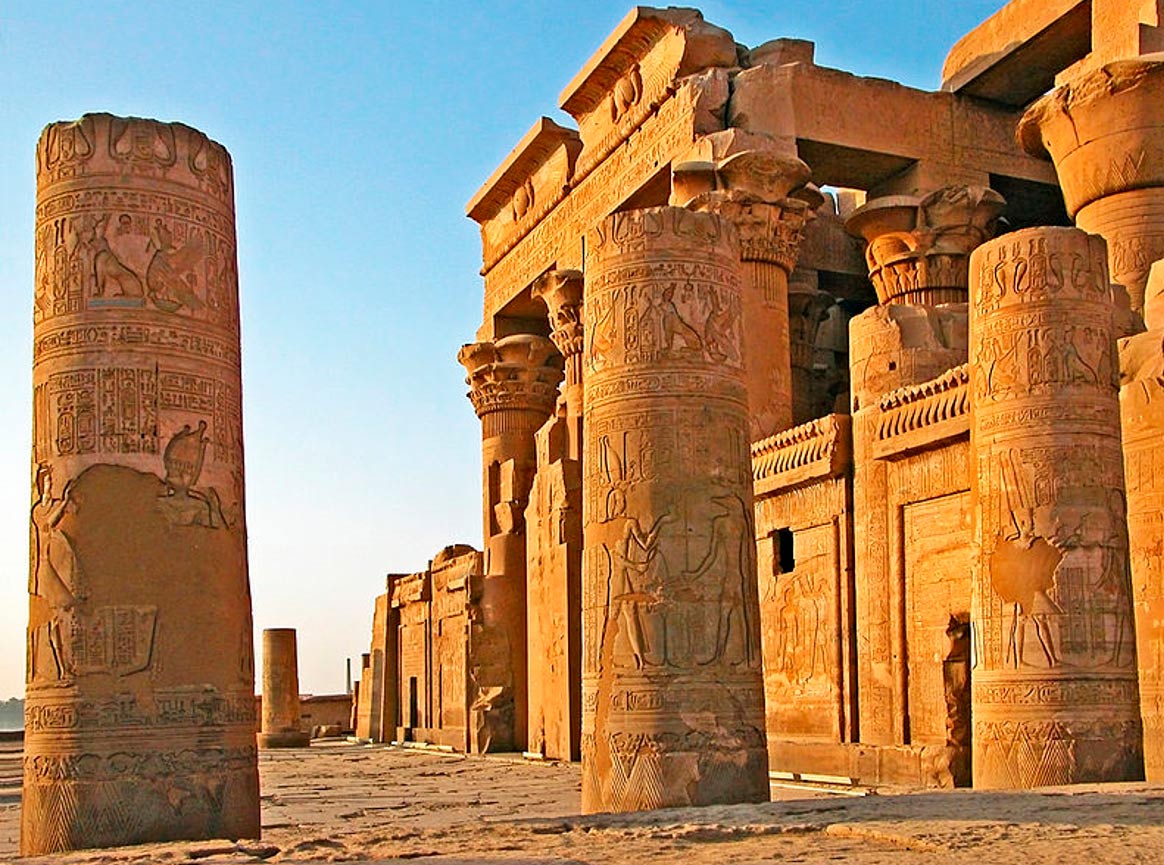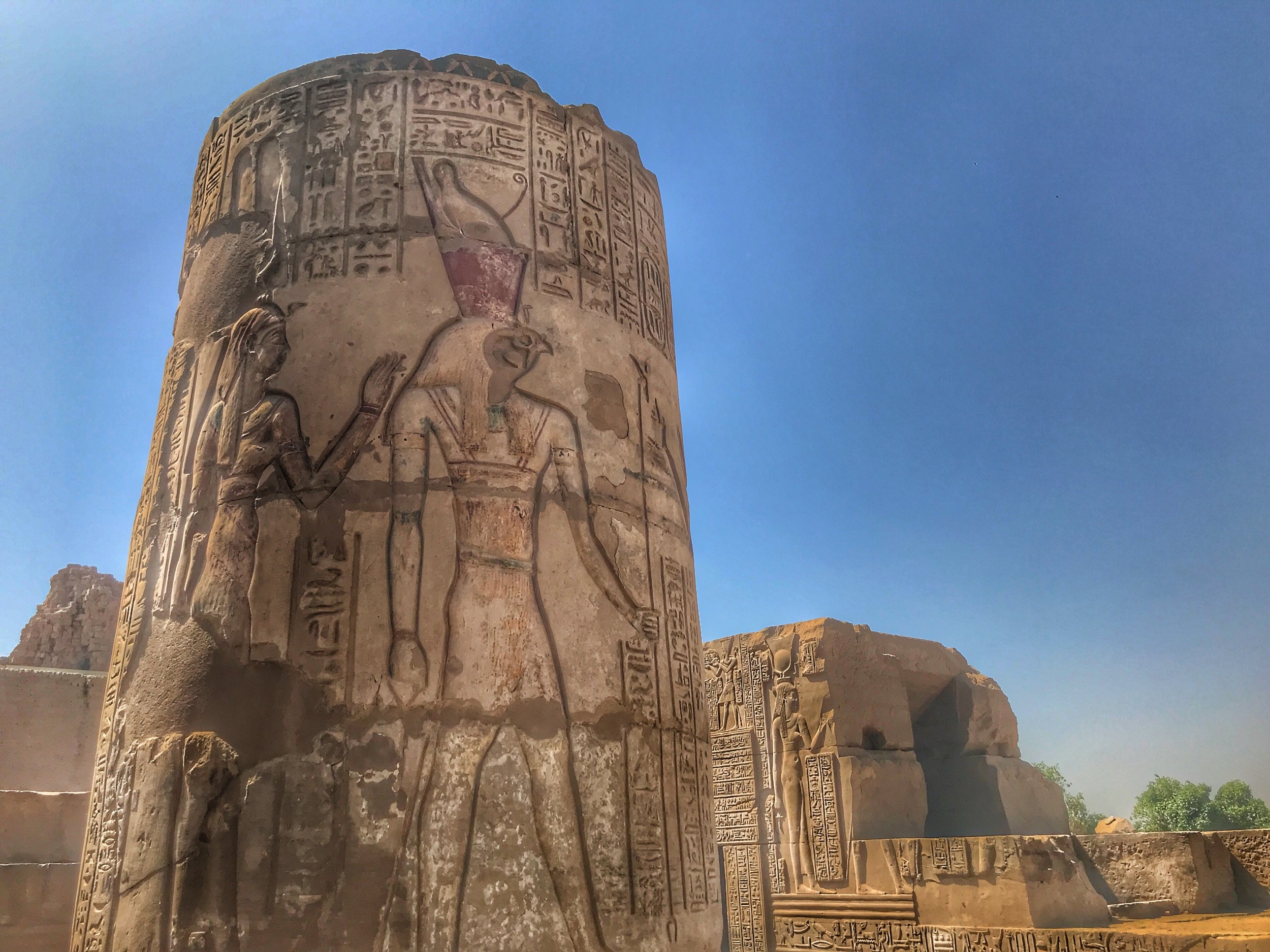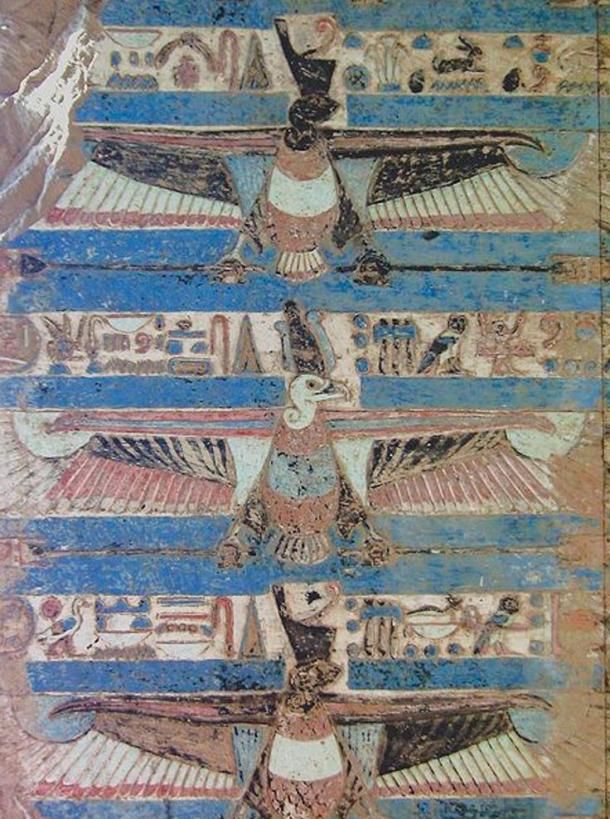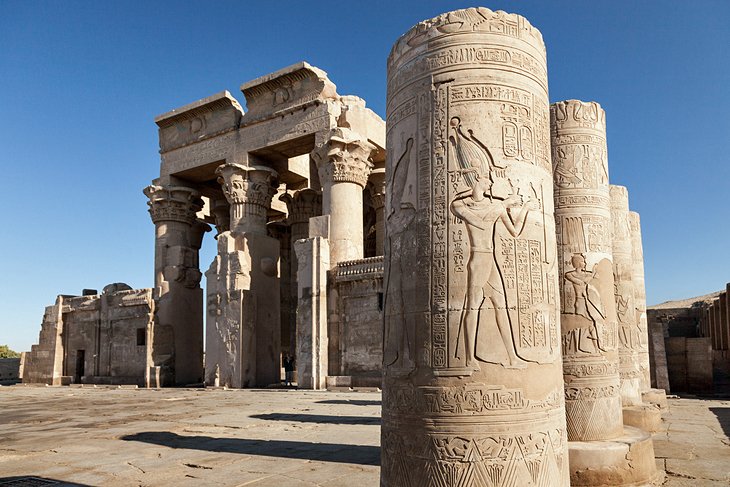Kom Ombo, which means the ‘Mound of Ombo,’ is an ancient town in Egypt situated in the present-day Aswan Governorate of Upper Egypt, approximately 50 km (31 miles) north of Aswan. The town is renowned mainly for its temple, commonly referred to as the Temple of Kom Ombo. What makes this temple unique is its dedication to two gods: Sobek and Horus.
The Pharaohs’ City of Gold

The history of Kom Ombo traces its origins to the era of the Pharaohs, when it functioned as a garrison town near Egypt’s southern border. Originally known as Nubt, meaning ‘City of Gold,’ the town continued to serve its military purpose during the Ptolemaic and Roman periods, albeit under different names. The Greeks called it Omboi, while the Romans named it Ambo. Today, Kom Ombo is most renowned for its magnificent temple, which has stood the test of time and remains well-preserved.
Was the Temple of Kom Ombo Constructed from Middle Kingdom Ruins

The construction of the Temple of Kom Ombo spanned approximately 100 years. The main temple was built during the reign of Ptolemy VI Philometor in the 2nd century BC. The majority of the temple’s decorations were added during the reign of Ptolemy XII Neos Dionysos in the 1st century BC. Additionally, some modifications were made to the temple during the Roman period. While there are reused blocks in the current structure that suggest the presence of an older temple from the Middle Kingdom, there is limited evidence beyond this to confirm its existence.
Who Are the Enemy Gods that Share the Dedication of the Temple?
The Temple of Kom Ombo is renowned for its unique dedication to two Egyptian gods: Sobek, depicted with a crocodile head, and Horus, depicted with a falcon head. What adds complexity to this arrangement is the ancient Egyptian belief that Sobek and Set were allies during the conflict with Horus. According to legend, after Set’s defeat, his allies transformed into crocodiles to evade Horus. In essence, Sobek and Horus were adversaries. Despite this mythological conflict, both deities are venerated at the Temple of Kom Ombo.

The dedication of the temple to the two gods is reflected in the structure’s architecture. The Temple of Kom Ombo may be divided symmetrically into two parts along a main axis. The western side of the temple was dedicated to Haroeris (the ‘Great Horus’, or ‘Horus the Elder’), while its eastern side to Sobek. Each half of the temple consisted of a monumental gateway, a hypostyle forecourt (which are linked), and an inner sanctuary for the deity. It may be assumed there were two groups of priests, one for the cult of Horus and another for that of Sobek.
What Other Roles does the Temple of Kom Ombo Serve?

The Temple of Kom Ombo served not only as a place of worship for Horus and Sobek but also as a means of glorifying the Ptolemaic dynasty, as evidenced by certain reliefs within the temple. On the right-hand stone screen in the forecourt, there is a depiction of Horus and Thoth pouring consecration water over Ptolemy XII, with Sobek observing the ceremony. A similar scene is portrayed on the left-hand stone screen of the forecourt, albeit with a slight variation: the roles of Horus and Sobek are reversed.
Another instance of the glorification of the Ptolemaic Dynasty at the temple is depicted in a relief within the inner hypostyle hall, where Ptolemy VIII is shown being presented with a curved weapon, symbolizing the sword of victory, by Horus. This dynastic propaganda is heightened by the presence of Cleopatra II, Ptolemy’s sister-wife and co-ruler, standing behind him. Furthermore, when the Romans assumed control of Egypt, they also left their mark on the temple. This is evident in reliefs found in the forecourt, which portray the Roman emperor Tiberius making offerings.
Restoration Leads to New Discoveries

Over time, the Temple of Kom Ombo was left abandoned and gradually fell into disrepair. Throughout the centuries, both natural disasters and human activities inflicted significant damage upon the structure. It wasn’t until the late 19th century that the temple garnered attention from Western archaeologists. In 1893, Jacques de Morgan, a French archaeologist, led efforts to clear and restore the section of the temple dedicated to Sobek. In more recent years, ongoing archaeological excavations have been carried out at the temple, leading to intriguing discoveries. Among these findings are the uncovering of a sphinx statue and two ancient paintings, which were unearthed earlier this year.
